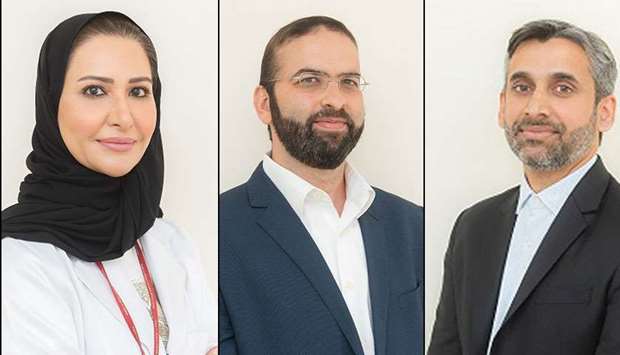In a first of its kind effort for Qatar, a group of investigators from Hamad Medical Corporation's (HMC) Rheumatology Osteoporosis team in collaboration with FRAX team from the University of Sheffield in the UK have formulated a fracture risk assessment tool (FRAX tool), which is expected to enhance osteoporosis management among Qatar's population.
"We are proud to have pioneered FRAX tool in Qatar. This initiative further puts Qatar at the fore front of countries with high-quality healthcare services. The FRAX tool has been recommended in more than 100 national and international guidelines and is expected to be adopted fully in Qatar soon a step being considered as a milestone in osteoporosis management in the country," says Dr. Samar Al Emadi, Head of Rheumatology Division at HMC.
According to her, FRAX tool is available in English and Arabic and can be used by healthcare workers as well as patients to predict the probabilities of their fragility fractures. "FRAX tool is an automated online calculator that enables a step change in the management of osteoporosis as patients can now be selected for therapy on their absolute fracture risk rather than bone mineral density - BMD T-score alone. The tool uses risk factors in addition to DXA measurements for improved fracture risk estimation. It is a useful tool that aids clinical decision making about the use of pharmacologic therapies in patients with low bone mass. The tool can be used with or without BMD to predict risk of fragility fracture in patients," she highlights.
Dr. Al Emadi says FRAX calculators will be readily accessible for healthcare workers and to the public to predict the 10-year probabilities of risk of hip and major osteoporotic fracture. "This tool would be used routinely by GPs general practitioners - and other medical doctors for individuals aged above 40 years as it will help to pick up patients at risk for fragility fracture at early stage so these patients will receive osteoporosis management. It is evident that screening people by FRAX with or without BMD reduce hip fracture rate by 20% in the community," she notes.
She mentions that hip fracture is considered the most debilitating among osteoporotic fractures and can result in high morbidity as well as sometimes mortality. "We diagnosed over 380 osteoporotic (low trauma) hip fractures in Qatar between the year 2017 and 2019. With the FRAX tool, we may be able to reduce this number significantly as cases would be detected early and patients would be referred for appropriate treatment before the fractures occur," notes Dr. Al Emadi.
She says over the last two decades many risk factors have been identified that contribute to fracture risk, at least partly if not wholly independently of BMD. "These include age, gender, a prior fracture, a family history of fracture, and lifestyle risk factors such as physical inactivity and smoking. These and other factors have been combined in analyses of incidence rate of hip fractures in Qatar to develop algorithms and scores to characterize future risk at the level of an individual," she adds.

From left: Dr. Samar Al Emadi, Dr.Omar Alsaed, Dr Nabeel Abdulla


